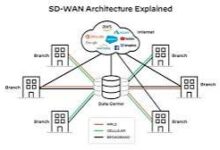Integrating Workflows API: Best Practices for Enhanced Business Efficiency

The need for efficient operations and streamlined processes has never been more crucial. Companies are increasingly turning to technology to optimize their workflow management and improve productivity. One such technology is the Workflows API, which allows businesses to automate tasks, integrate systems, and enhance overall efficiency. This article explores the best practices for integrating Workflows API and how to leverage it as a powerful workflow management tool.
Understanding Workflows API
A Workflow API is a set of programming instructions that allow different software applications to communicate with each other. It enables businesses to automate and manage workflows by integrating various systems, applications, and services. This can lead to significant time savings, reduced manual errors, and improved operational efficiency.
With a well-integrated Workflow API, organizations can:
- Automate repetitive tasks: Reduce the time spent on manual processes.
- Enhance data accuracy: Minimize errors caused by manual data entry.
- Improve collaboration: Allow different teams to work seamlessly across applications.
- Gain real-time insights: Access up-to-date information across systems for better decision-making.
Best Practices for Integrating Workflows API
Integrating a workflow API into your business operations can be a game-changer, but it requires careful planning and execution. Here are some best practices to consider:
1. Define Clear Objectives
Before diving into the integration process, it’s essential to outline clear objectives for what you want to achieve. Whether you aim to automate specific tasks, improve data flow between applications, or enhance overall workflow efficiency, having defined goals will guide your integration efforts.
- Set measurable targets: Determine specific KPIs to evaluate the success of the integration, such as time saved, error reduction, or increased productivity.
- Involve stakeholders: Engage key stakeholders from different departments to ensure that the objectives align with overall business goals.
2. Choose the Right Workflow Management Tool
Selecting the appropriate workflow management tool is critical for successful integration. The right tool should offer robust API capabilities, user-friendly interfaces, and seamless compatibility with your existing systems.
- Evaluate features: Look for tools that provide customizable workflows, automation capabilities, and reporting functionalities.
- Consider scalability: Choose a solution that can grow with your organization, allowing for additional integrations or functionalities as needed.
3. Map Out Existing Workflows
Before integrating a Workflows API, take the time to document and analyze your existing workflows. Understanding your current processes will help identify bottlenecks, redundancies, and areas for improvement.
- Create visual maps: Utilize flowcharts or diagrams to visualize current workflows. This will help you understand how different tasks and systems interact.
- Identify pain points: Determine which processes are time-consuming or prone to errors, as these are prime candidates for automation.
4. Plan for Integration
Integration planning is a critical step that involves selecting the right integration method and preparing your systems for the transition.
- Choose an integration approach: Decide whether to use a point-to-point integration, middleware, or a hybrid approach based on your business needs and IT infrastructure.
- Establish a timeline: Set a realistic timeline for the integration process, considering potential challenges and resource availability.
5. Test Thoroughly Before Deployment
Before fully deploying your Workflows API integration, conduct thorough testing to identify any issues or areas for improvement.
- Run pilot tests: Implement the integration on a small scale to evaluate its performance and gather feedback from users.
- Iterate and refine: Use insights gained from testing to make necessary adjustments and ensure the integration meets your objectives.
6. Train Your Team
A successful integration relies on user adoption. Providing training and support to your team will facilitate a smoother transition and maximize the benefits of the Workflows API.
- Conduct training sessions: Offer hands-on training to familiarize users with the new workflow management tool and its features.
- Create documentation: Provide comprehensive guides and resources that users can reference as they adapt to the new system.
7. Monitor and Optimize
After deployment, it’s essential to monitor the performance of your Workflows API integration continuously. Regular evaluations will help you identify areas for further improvement and ensure that you’re meeting your initial objectives.
- Track KPIs: Use the measurable targets set during the planning phase to assess the integration’s success.
- Solicit user feedback: Regularly gather input from users to identify pain points and opportunities for optimization.
8. Ensure Security and Compliance
Integrating a workflow API involves the transfer of sensitive data between systems. Prioritizing security and compliance is crucial to protect your organization from data breaches and regulatory issues.
- Implement security measures: Utilize encryption, access controls, and secure authentication methods to safeguard data.
- Stay compliant: Ensure that your integration adheres to relevant regulations, such as GDPR or HIPAA, to avoid legal issues.
Conclusion
Integrating a Workflow API into your business operations can significantly enhance efficiency, streamline processes, and improve productivity. By following these best practices, you can ensure a successful integration that aligns with your organization’s goals.
As businesses continue to evolve in an increasingly digital landscape, leveraging technology such as a workflow management tool will be essential for staying competitive. With clear objectives, the right tools, thorough planning, and ongoing optimization, your organization can harness the full potential of a Workflows API and transform its operations for the better.
Incorporating a Workflows API into your business strategy is not just about automation; it’s about creating a culture of efficiency and innovation. Embrace the power of integration and watch your organization thrive in today’s dynamic business environment.
Read More: 1883 magazine





